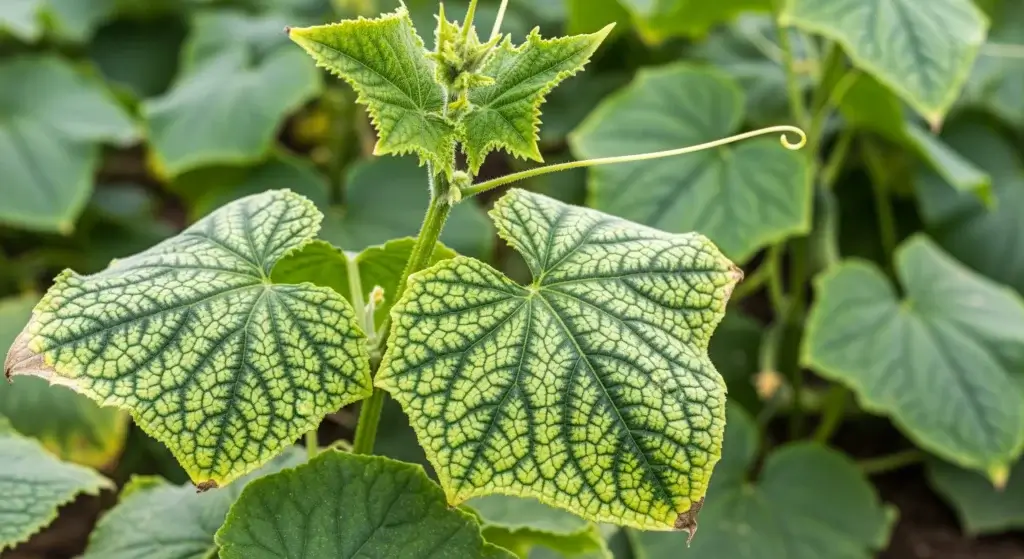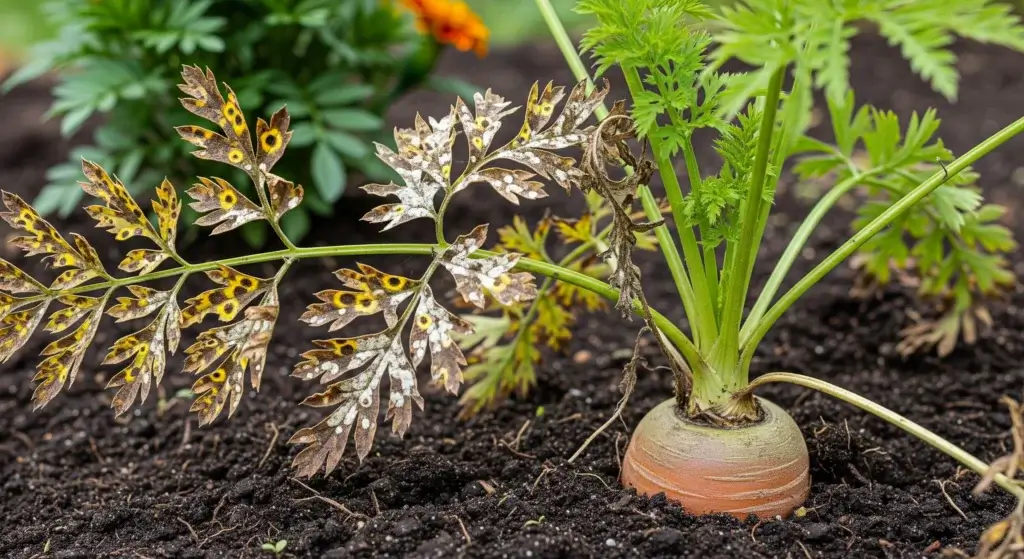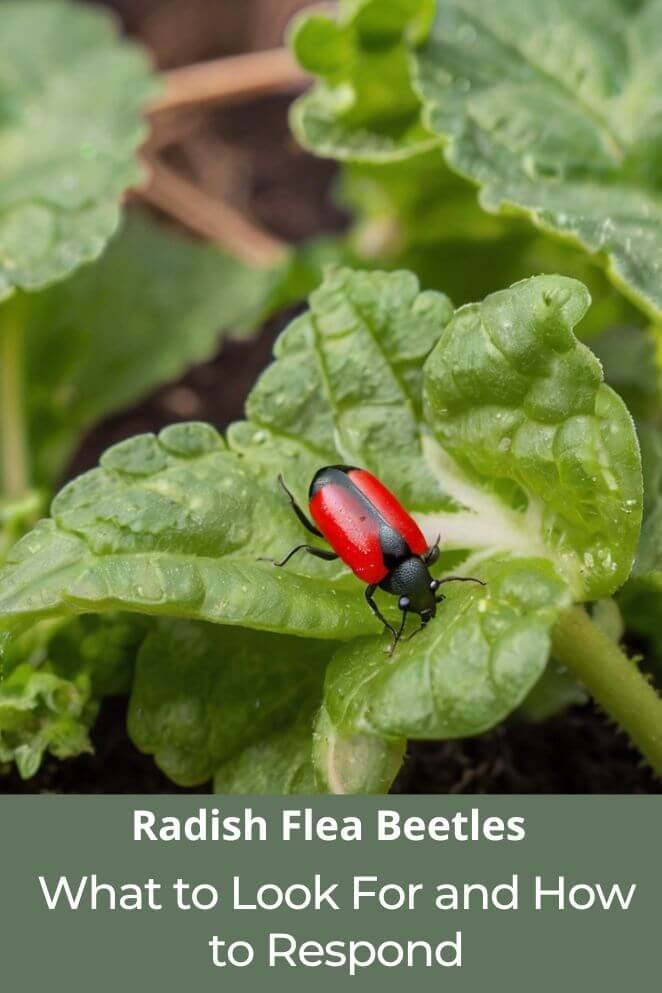
Radish flea beetles are small, jumping insects that can quickly damage your radish plants if left unchecked.
Their impact can be severe, especially if not dealt with early.
Luckily, there are several effective ways to control these pests, including cultural practices, physical barriers, biological controls, and simple home remedies.
Let’s dive into these methods to help keep your radishes healthy and thriving.
What are Radish Flea Beetles?
Radish flea beetles belong to the family Chrysomelidae, specifically the Phyllotreta species.
These small beetles are typically black or dark brown and about 1/16th of an inch in size.
Despite their size, they are powerful jumpers, much like fleas, hence the name “flea beetle.”
These beetles are most active during the early growing season and prefer feeding on cruciferous plants, including radishes, broccoli, cabbage, and kale.
Flea beetles can reproduce quickly, and if left unchecked, they may cause significant damage to young seedlings.
Damage Caused by Radish Flea Beetles
The primary concern with radish flea beetles is their feeding behavior.
Adult beetles chew small, irregular holes in the leaves, a damage pattern often called “shot-holing.”
While this damage may seem minor, it can significantly impact the growth and productivity of radish plants.
Seedlings are particularly vulnerable, as heavy infestations can weaken or even kill young plants.
According to a study published in the Journal of Economic Entomology (Capinera, 2001), radish flea beetle infestations can reduce crop yields by up to 35%, especially if plants are attacked during the early growth stages.
The beetles not only affect the foliage but also stress the plant, making it more susceptible to other pests and diseases.
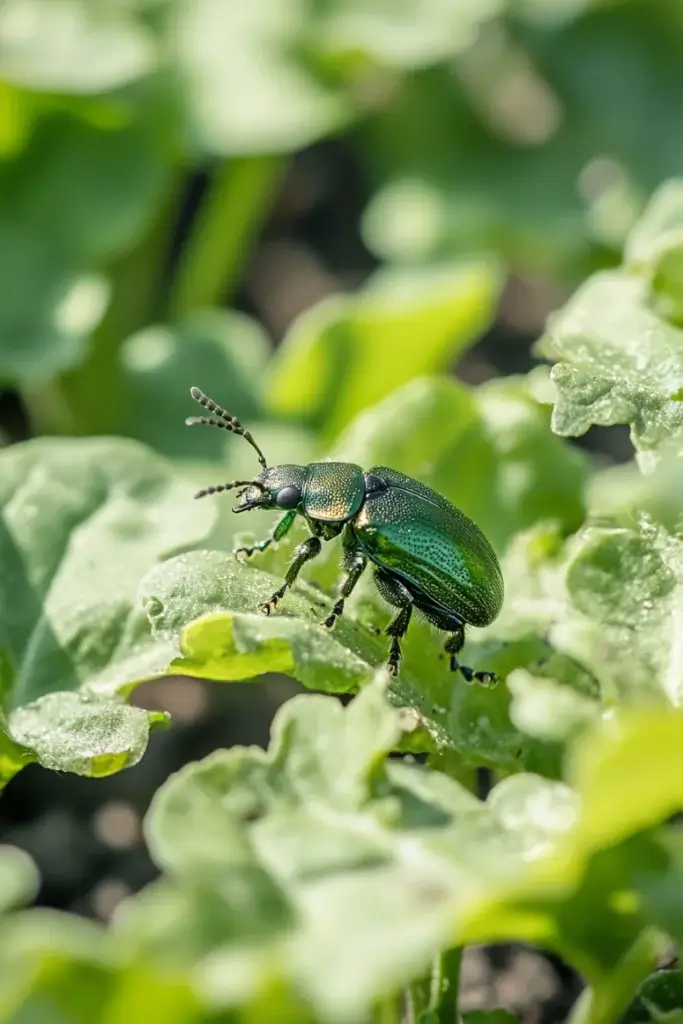
Signs of Radish Flea Beetle Infestation
Identifying a radish flea beetle infestation early is crucial for controlling their population and minimizing damage.
Here are some signs to watch for:
- Small holes in leaves: Flea beetles create small, round holes in the leaves, giving them a “shot-hole” appearance.
- Yellowing and wilting: Severe infestations can cause leaves to yellow and wilt, affecting the plant’s growth and overall health.
- Presence of beetles: If you notice tiny black or brown beetles jumping from your plants when disturbed, it’s likely a flea beetle infestation.
Prevention and Control Measures
Controlling radish flea beetles requires a multi-faceted approach, combining cultural, physical, biological, and chemical methods.
Cultural practices
Using smart gardening practices can help lower flea beetle numbers and keep your radish crop safe from infestations:
Crop rotation
Change where you plant your crops each season.
By rotating where you grow radishes or other cruciferous vegetables (like cabbage or broccoli), you disrupt the flea beetles’ life cycle, making it harder for them to return the next season.
Intercropping and companion planting
Plant radishes alongside companion plants like marigolds, nasturtiums, or onions.
These plants naturally repel flea beetles, helping to protect your radishes.
Timely planting
Adjust your planting schedule to avoid times when flea beetles are most active.
Planting your radishes a couple of weeks earlier or later in the season can significantly reduce flea beetle damage, according to research (Environmental Entomology, 2005).
Physical Barriers
Physical barriers are a great way to protect your radish plants, especially when they’re young and more vulnerable:
Row covers
Floating row covers are lightweight fabric sheets that act as a shield, keeping flea beetles away from your plants.
Make sure to secure the covers tightly to the ground so the beetles can’t crawl underneath.
These covers also let sunlight and water in, so your plants can still grow while staying protected.
Netting
Fine netting works well to cover your radish beds, allowing light and water to reach the plants while blocking pests.
This is especially useful in smaller garden spaces where it’s easier to control the environment.
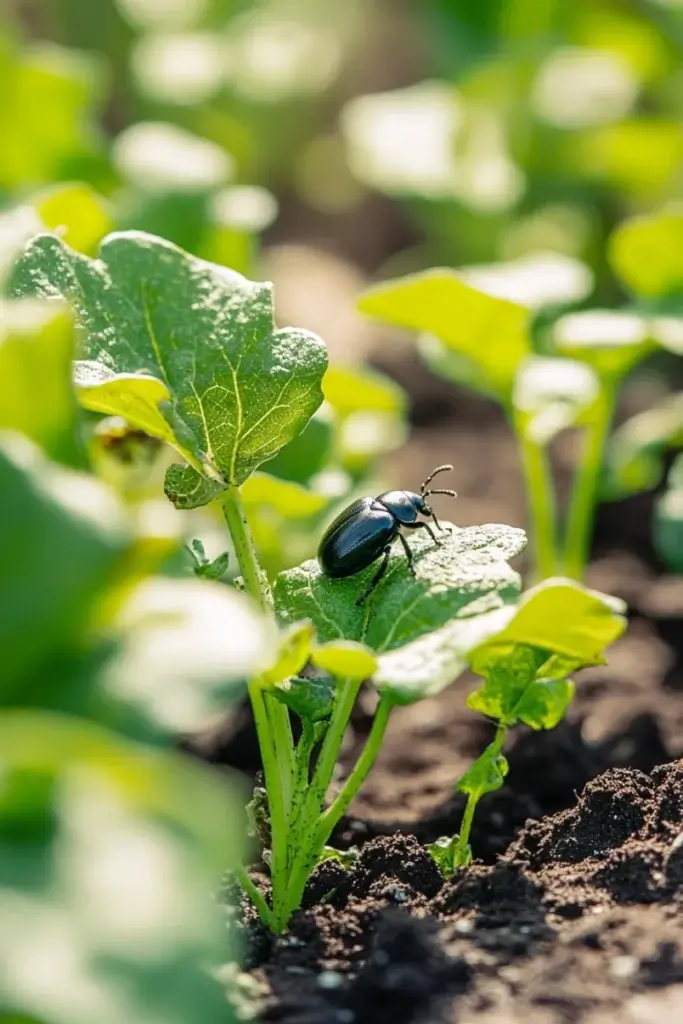
Biological control
Encouraging natural predators in your garden can help control flea beetles without the use of chemicals:
Beneficial insects
Insects like ladybugs, lacewings, and predatory beetles are natural enemies of flea beetles.
By attracting or introducing these helpful insects into your garden, you can reduce flea beetle numbers naturally.
Nematodes
Parasitic nematodes, such as Steinernema carpocapsae, can be added to the soil to target flea beetle larvae before they mature into adults.
According to a study in the Journal of Insect Science (Wang et al., 2012), nematodes can cut flea beetle populations by as much as 60%.
This is an effective and eco-friendly way to manage these pests.
Chemical control
If infestations are severe, chemical control methods may be necessary.
However, it’s essential to use insecticides responsibly and safely:
- Insecticides: Pyrethrin-based insecticides are effective against flea beetles and are approved for use in organic gardening.
- Timing: Apply insecticides when flea beetles are most active—usually during early spring when plants are young and vulnerable.
- Safety: Always follow label instructions and wear protective gear when handling insecticides. Avoid applying on windy days to prevent drift.
Home Remedies for Radish Flea Beetles
Home remedies can also be effective in deterring flea beetles without resorting to chemical treatments.
Natural repellents
- Diatomaceous earth: Sprinkle food-grade diatomaceous earth around radish plants. The sharp particles can damage the exoskeleton of flea beetles.
- Neem oil: Neem oil is a natural pesticide that can repel flea beetles when applied directly to the plants. It disrupts their feeding and reproduction.
- Hot pepper spray: A mixture of hot pepper, garlic, and water sprayed on the foliage can deter flea beetles. Repeat the application after rain or heavy dew.

Companion Planting Strategies
Planting radishes alongside certain companion plants can naturally repel flea beetles:
- Marigolds: Marigolds release a strong scent that confuses and deters flea beetles. Plant them around the borders of your radish bed for protection.
- Nasturtiums: Nasturtiums act as a trap crop, attracting flea beetles away from your radishes. This technique helps protect your main crop.
Final Thoughts
Managing radish flea beetles may seem challenging, but with the right approach, you can protect your crop and ensure a healthy harvest.
By combining cultural practices, physical barriers, biological controls, and natural remedies, you can effectively manage flea beetle infestations without heavily relying on chemical solutions.
Understanding the signs of infestation and acting promptly is key.
Regular monitoring and early intervention are crucial for keeping your radishes pest-free and thriving.

